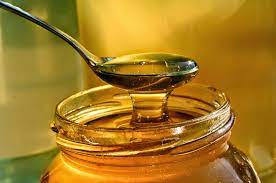Honey is a sweet and sticky liquid made by bees. Bees collect nectar from flowers, bring it to the hive, and then transform it into honey through a process. There’s a high demand for honey because it has therapeutic properties and people also use it as a natural sweetener in food and drinks. However, this high demand for honey has brought about all kinds of adulteration by people who try to take advantage of the market. Hence the need to discover how to know original honey before making purchases. On this guide, I will show you 7 tests to pass your honey through to identify if it’s original.

“The sweetness of life lies in usefulness, like honey deep in the heart of a clover bloom.” ~ Laura Ingalls Wilder.
Table of Contents
How to Know Original Honey
Where you source your honey is very important. So, I advise you to buy honey from reputable beekeepers, local farmers markets, or specialty stores that stock raw, unprocessed honey. In these places, you have a greater chance of getting original honey.
However, the following are simple tests you can put honey through to know if it is original and pure regardless of where you source it from:
1. Look at the Label
This is for those buying honey from the grocery or specialty stores where they are neatly packaged and displayed on shelves. Before you pick the product and add to your shopping cart, look closely at the label. Look for labels that simply say “raw honey,” “unfiltered honey,” or “locally sourced” and ensure that such claim is certified by the right government authority.
The reason is because genuine honey usually has minimal ingredients listed, or better still, no extra ingredients. So avoid honey labeled “honey blend” or “honey product,” or any honey with a list of other ingredients, for example, sugars because they are not original.
2. Consider the Price
Sourcing for raw honey is not an easy venture. It is usually a difficult and risky task meddling with the bees. So original honey is often relatively expensive. If you are offered honey at very low prices, it is a valid indication that the honey is adulterated.
3. Check the Viscosity or Thickness
This is not a difficult test at all. Pure honey is thick and viscous, and it should slowly drip off a spoon rather than run freely. Actually, if you allow pure honey to drop to the ground from a spoon, it will go down like a thread without breaking.
4. Smell and Taste
This is a very simple and straightforward test for original honey. We are all natural beings and honey is also a natural product. Original honey has a natural and distinctive aroma and taste, and as a human being, you are capable of spotting those amazing aroma and taste.
So, if you are buying your honey from the local market, always ask the sellers to give you a sample to taste. If it smells off or tastes weird, run! It could be fake.
5. Do the Water Test
Pour a spoonful of honey into a glass of water. If it’s pure honey, it will go down to the bottom of the cup and clump slightly, without mixing up with the water except you stir it. But adulterated honey would either dissolve or cloud the water.
6. Do the Blot Test
Pure honey does not soak tissue paper. I guess this might come as a surprise to you but it’s true. So before you pay for that honey, allow a few drops on a tissue paper. If it soaks through or leaves a wet mark, then it is not original honey.
7. Check for the Honeycomb or Pollen
Real unadulterated honey often contains bits of honeycomb or pollen, which are good indicators of originality. If the honey you are about to buy looks too clear and lacks these natural elements, there is a high possibility that it might be processed or diluted.
8. Do the Flame Test
Dip a match stick into your honey and strike it. If it’s pure honey, the match stick will burn with the honey on it. Another way you can do this test is to dip a cotton swab in honey and light it carefully. Again, pure honey will burn. The reason why both the match stick and cotton swab will burn is because the natural sugars in honey act as fuel for the flame.
9. Do the Vinegar Test
Pure honey does not foam when it is mixed with diluted vinegar. So to confirm if your honey is original, mix a few drops of it with diluted vinegar. If it foams, it is likely to be adulterated with substances like starch or chalk.
10. Check for Crystallization
Raw honey naturally crystallizes over time, forming solid crystals. It is a natural process and a good sign of originality of the honey. But if you buy and keep your honey over time, and it’s always liquid, you might want to consider changing your source.
Does Honey Attract Ants and Insects?
Yes, honey can attract ants. Ants are drawn to sweet substances, and honey is a sugary treat for them. So using the attraction of ants and insects as a test for the originality or purity of honey is not reliable.
But what actually attracts ants more to honey is the moisture content rather than the sugar itself. Higher moisture content makes it easier for them to access the sugars.
Some people believe that fake honey attracts ants more than real honey but that is not entirely true. As long as the moisture content is high enough, any type of honey can attract ants.
Read Also: How To Confirm Whether Sperm Went Inside Your Partner
Uses of Honey and Why You Need to Check if it’s Original
Honey is a very important commodity. It is used for different purposes, especially in the field of medicine. It is also used as an alternative to sugar by diabetics and other people who like to avoid synthetic sugar. More so, honey is put to many other uses including:
- cosmetic industry because it nourishes the skin.
- treatment of victims of fire accidents as it fastens wound healing.
- use in food and beverage industries for making food and snacks.
- professional singers take honey to soothe their throats before performances.
Pure honey boasts various health benefits due to its unique composition of vitamins, minerals, antioxidants, and natural enzymes. Adulterated honey, however, lacks these beneficial components and might even contain harmful additives. By ensuring your honey is pure, you maximize the potential health gains.
Read Also: How to Bake Cookies at Home, Recipes and Step-by-step Guide
Frequently Asked Questions About Honey
What color is pure raw honey?
While honey comes in various colors, from “water white” to “motor-oil black,” raw and unfiltered varietal honeys typically maintain a cloudy and opaque appearance. This is due to the presence of natural pollen, preserving the authentic flavor. When choosing honey, focus on its cloudiness rather than color for a delightful experience.
Is raw honey dark or light?
Raw honey can vary in color, ranging from lighter to darker shades. No particular color is superior to another. While darker honeys boast stronger flavors, it’s worth noting that some light honeys also carry powerful and distinct taste profiles.
What Colour is original honey?
Original raw honey exhibits a range of colors, including golden brown to yellowish-orange, light to dark amber, and occasionally reddish-brown. The color variation is influenced by the types of flowers that the bees have pollinated.
Can honey expire?
Honey maintains a slightly acidic pH level, thanks to the presence of gluconic acid, acting as a natural barrier against microbial growth. Generally, honey doesn’t spoil, but improper storage or contamination can lead to spoilage. If you notice visible mold, a fermented smell, or an “off” odor in your honey, it’s advisable to discard it.
Final Thoughts About How to Know Original Honey
The truth is that there are several tests and methods you can use to try to determine if your honey is original and authentic. You already have 10 of them above, but it is important to bear in mind that none of these methods are foolproof. If you need a definitive results, go to a lab to test your honey. However, some of the tests above can give you an indication of the purity of your honey.
If you got value from this guide, help us so that we can reach other JAMB candidates. Share with friends on Social Media. Just scroll down to see the Facebook and Twitter and WhatsApp buttons. Thank you so much!
Still Got a Question? Drop Your Question Right HERE 👇👇 and click on Search. Get an Immediate Response...
Get in touch with us
Join our FREE 2026 JAMB, WAEC, NECO and BECE Tutorial Classes here: Youtube (Subscribe to the channel)
This is for JSCE, Science and Art Students
If this post was helpful to you, please help us to reach others by sharing with the buttons below!

![How to Write Letter of Undertaking [See Samples]](https://suresuccess.ng/wp-content/uploads/2019/02/letter-of-undertaking-3-310x165.png)